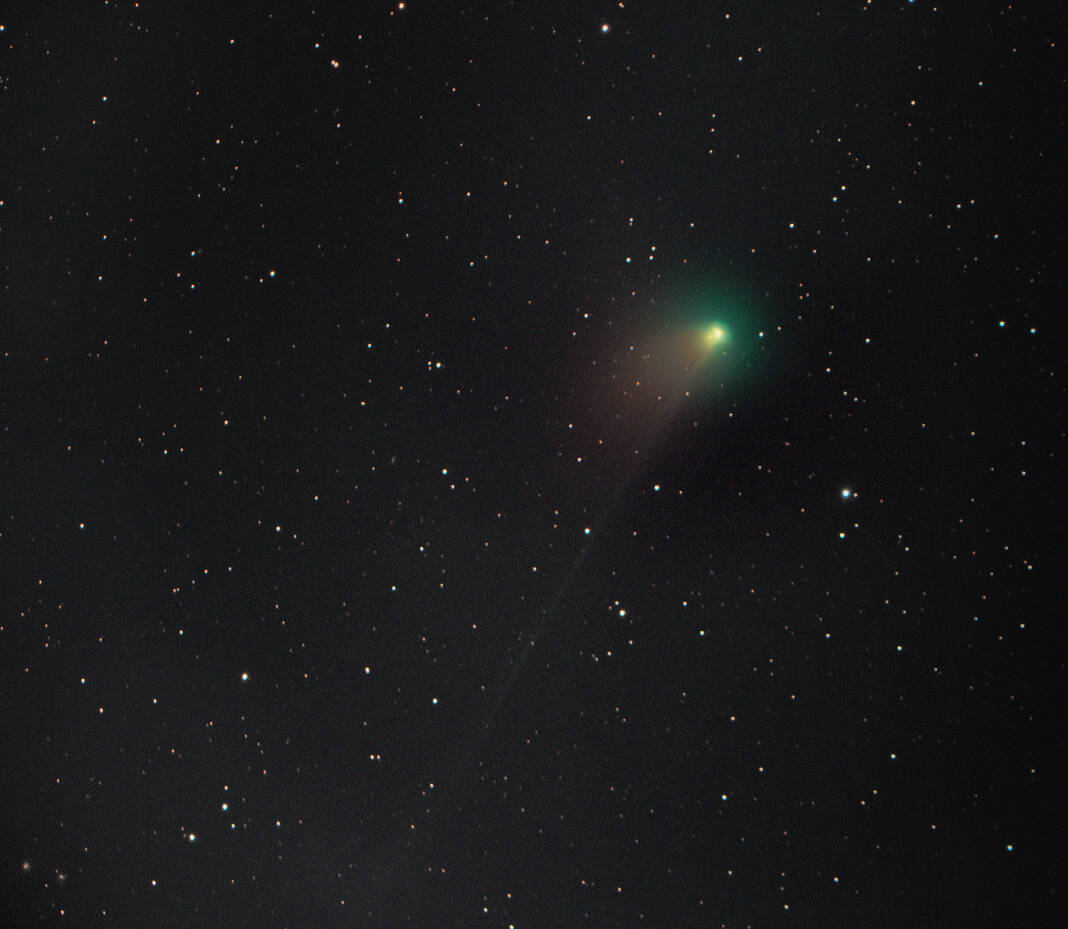
HARLINGEN — A comet that last approached Earth 50,000 years ago is making a return engagement.
A gaseous ice ball with the less-than-poetic name C/2022 E3 ZTF is currently approaching on its near-Earth path and will be closest to the planet on Feb. 1.
And if all goes well, anybody can spot it by looking north between 3 a.m. and sun-up.
“I think it’s going to be within 20 to 30 million miles of us, which is very close,” said Victor de los Santos, executive director of the South Texas Astronomical Society. “The sun is about 90 million miles so it’s a lot closer than the sun is. And it’s going to be very bright, so bright you can see it with the naked eye.”
Brightness in space objects is measured by magnitude. The lower the magnitude, the brighter the object.
“It gets hard to see with the eyes around anything over 11, 12, 13 magnitude,” de los Santos said. “This thing is supposed to be 6 magnitude, which is a lot brighter than a lot of the stars we can see with the naked eye.”
The icy visitor was discovered by astronomers last year using the wide-field survey camera at the Zwicky Transient Facility at the Palomar Observatory in California.
It reached its perihelion, or closest distance to the sun, on Jan. 12. Its perigee, or closest distance to Earth, will be Feb. 1.
Most comets zipping through the solar system are white or have a blue tint.
But C/2022 E3 ZTF is a relatively rare good-looker that shows up green.
“Comets typically have two tails, an ion tail and a dust tail. Typically the dust tail is white, and as you could probably guess, is made up of the dust and the dirt that’s on the comet that’s being pushed away,” de los Santos said. “And the other one is the ion tail, which is basically the gases which are also being pushed away from the comet.”
“The dust tail, typically, is harder to see,” he added. “It’s not as noticeable, but it’s typically always white. The other one is typically a blue tail in a regular comet, but this one is green because of the gases that make it up.”
The comet is already visible if you have a telescope or good binoculars, but it will brighten between now and Feb. 1. Look north toward the star Polaris, which forms the tip of the ladle on the Little Dipper.
De los Santos said the comet currently doesn’t appear over the horizon until about 3 a.m. and then fades away as the first rays of the sun arrive about 6 a.m.
He said the astronomical society is tracking the comet and will be making a determination soon on whether to host a comet-watching party at the observatory at Resaca de la Palma State Park in Brownsville.
To keep up with the society’s updates, follow the society on its Facebook page.




